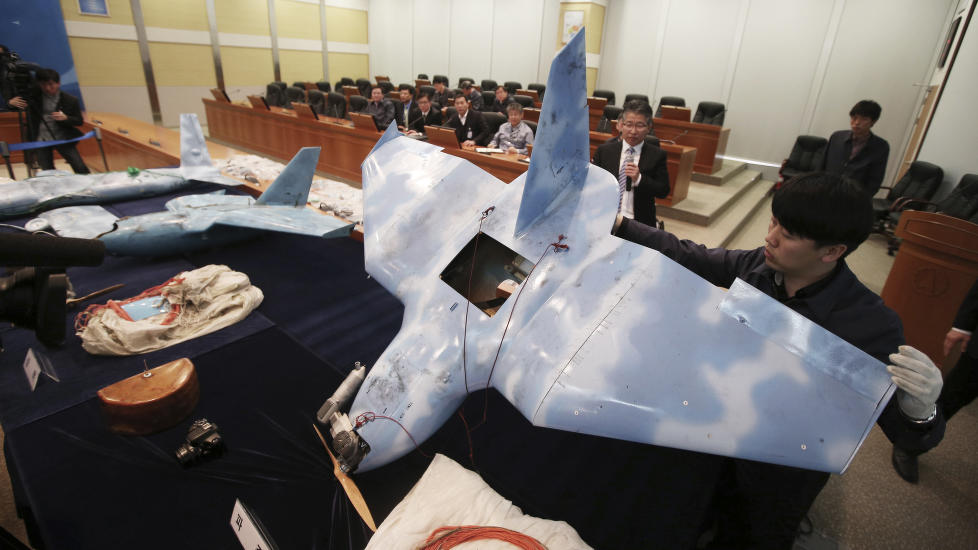- California Assembly OKs highest minimum wage in nation
- S. Korea unveils first graphic cigarette warnings
- US joins with South Korea, Japan in bid to deter North Korea
- LPGA golfer Chun In-gee finally back in action
- S. Korea won’t be top seed in final World Cup qualification round
- US men’s soccer misses 2nd straight Olympics
- US back on track in qualifying with 4-0 win over Guatemala
- High-intensity workout injuries spawn cottage industry
- CDC expands range of Zika mosquitoes into parts of Northeast
- Who knew? ‘The Walking Dead’ is helping families connect
Latest way to smuggle items to N. Koreans? Drones
NEW YORK (AP) — Activists who are determined to give North Koreans a glimpse of the outside world have started using drones to smuggle banned information past the country’s tightly controlled borders.
North Korean defector Jung Gwang Il says his organization No Chain began the deliveries in April, sending them from neighboring China. Human rights groups say this is the first time they’ve heard of drones being used to slip items into the country.
Jung spoke to reporters Thursday before attending a U.N. Security Council meeting on North Korea’s human rights situation, which has been called the worst in the world.
North Korea severely restricts the flow of information across its borders, even maintaining a domestic-use-only Intranet for its citizens who are blocked from the global Internet.
As spokesman for North Korea’s mission to the U.N. did not immediately respond to an emailed request for comment Thursday evening.
Activists have used various ways, including balloons, to smuggle in items such as mobile phones and flash drives loaded with South Korean television shows and K-Pop music. Last year, North Korea opened fire on giant balloons carrying anti-Pyongyang leaflets that activists floated across the border.
Jung told The Associated Press that the drone deliveries now carry about 2,000 “storage devices” into North Korea every month. He flicked through his smartphone to show photos of a spider-like drone.
“It’s more difficult than it looks,” though there have been no problems so far, he said through a translator. Contacts inside North Korea have to be told in advance where the nighttime drop-off will be.
The deliveries are a high-tech alternative to signaling across the border at night, wading into the river separating China and North Korea and handing off goods mid-stream. “With drones, you don’t have to employ people or smugglers,” Jung said, but the drones come with their own obvious costs.
North Korea’s government is already embracing drones, but in a far different way. Drones were among the military equipment on display in October at a massive Pyongyang parade to mark the 70th anniversary of the country’s ruling party. And in early 2014, three crashed drones found in South Korea were determined to have been on North Korean military surveillance missions.
South Korea-based media reports this week said that country’s military is pursuing drones of its own.
Jung is one of scores of North Korean defectors who have supported a U.N. commission of inquiry that last year reported widespread abuses by the government and warned North Korean leader Kim Jong Un he could be held accountable for crimes against humanity.
Jung says he was held for three years in a North Korean political prison camp a decade ago, being tortured and watching 26 fellow inmates be executed or die of malnutrition. “I have personally buried scores of prisoners,” he told reporters Thursday.
Now, he said, his organization is taking the commission’s findings and turning them into videos that can be included in the materials the drones carry across the border. Flashing his smartphone again, Jung showed an image of one clip that featured him.
“It’s easier to understand if it comes from a defector,” he explained.
















